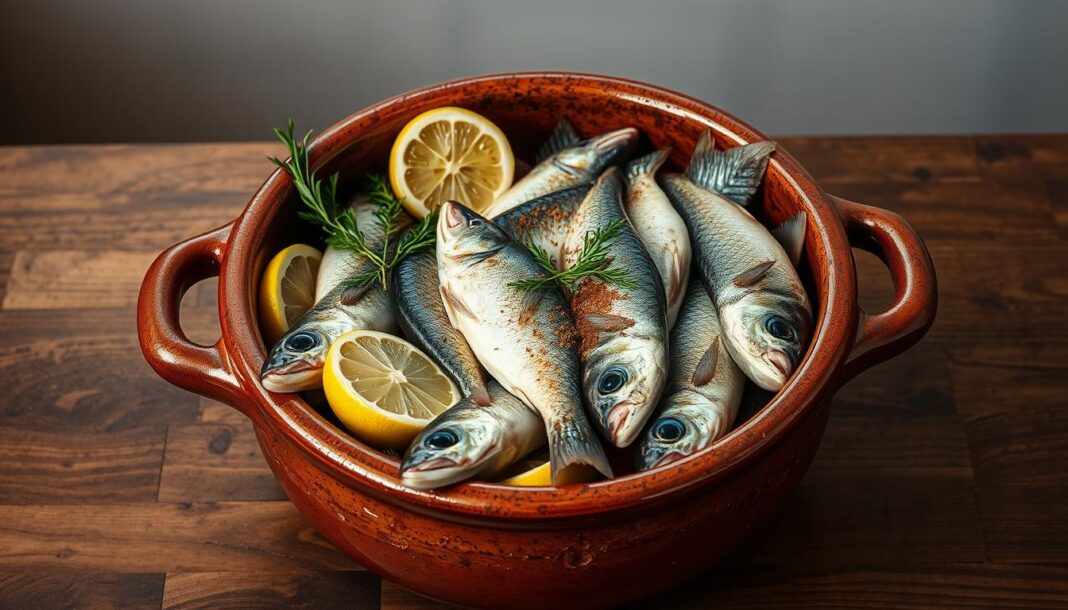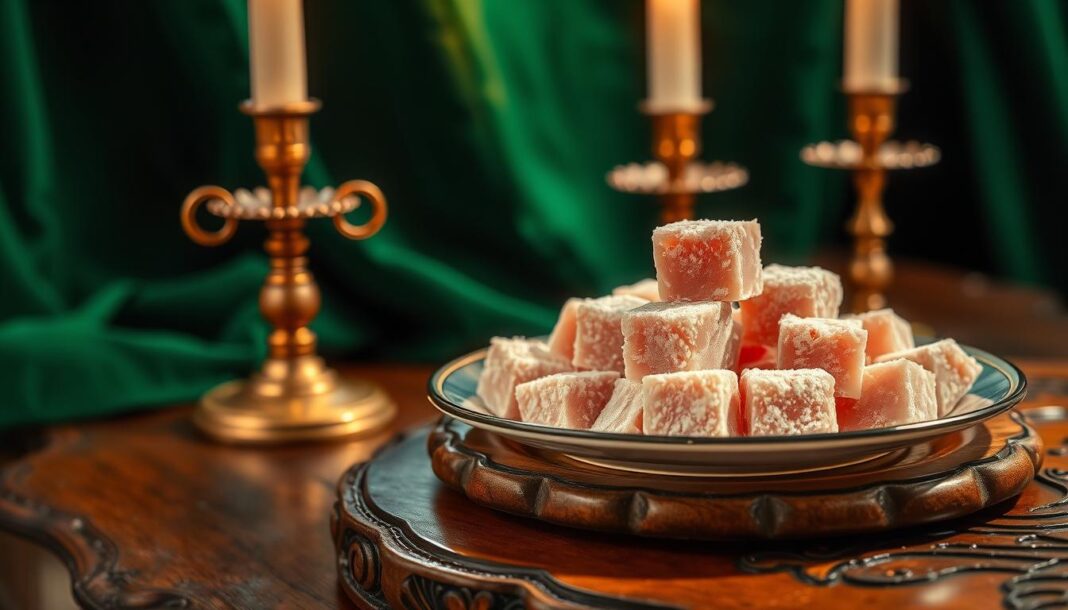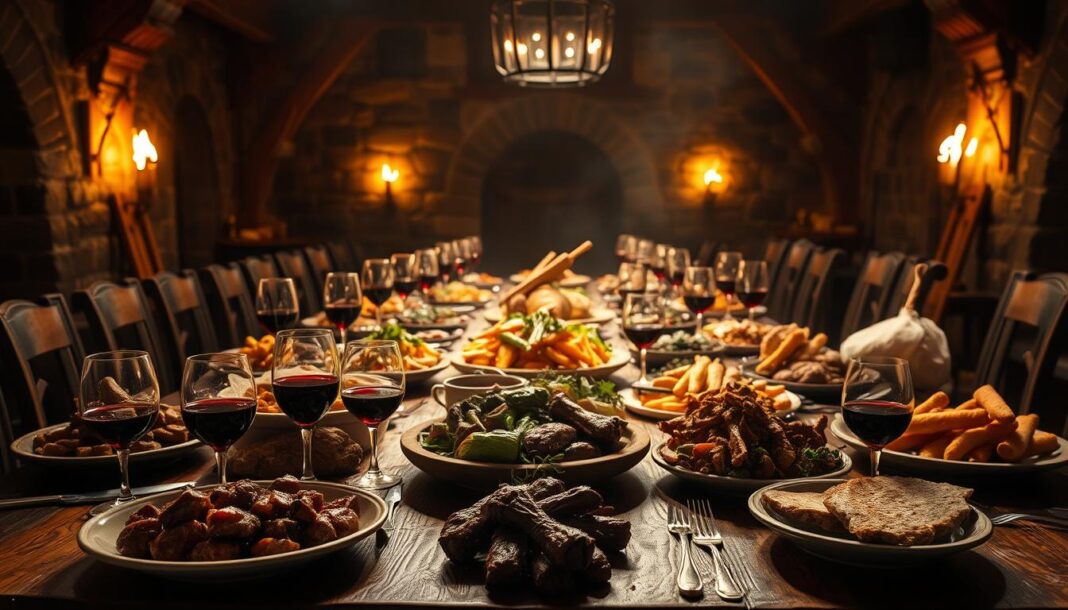We explore the fascinating world of potted fish, a traditional preservation method that dates back centuries. This technique not only preserves the delicate flavors of fish but enhances them through careful seasoning and butter preservation.
Potting is a simple yet effective way to transform leftovers into a lovely light meal or snack. By making a pate or spread with cooked fish and butter, we can create a delicious and convenient dish that keeps well for a week or longer in the refrigerator.
Key Takeaways
- Potted fish is a traditional preservation method that remains relevant in modern cuisine.
- The technique involves making a pate or spread with cooked fish and butter.
- Potted fish is a convenient and delicious way to reduce food waste.
- This dish offers both extended shelf life and complex flavors.
- Our guide will share expertise on traditional recipes and modern interpretations.
What Is Potted Fish?
At its core, potted fish is about transforming cooked fish into a delectable pate or spread. This traditional preservation method involves mixing the fish with butter and sometimes salt to enhance the flavor.
Potting is a versatile technique that can be applied to various types of fish and other ingredients, making it a valuable skill for any home cook.
The Art of Potting Food
The art of potting food, including fish, revolves around creating a harmonious balance between the main ingredient and the accompanying flavors. Butter plays a crucial role in this process, not only adding richness but also helping to preserve the fish by preventing air from reaching it.
Benefits of This Preservation Method
Potting fish offers several benefits, including extended shelf life and enhanced flavor. By sealing the fish in butter, we create an environment that inhibits bacterial growth, allowing the fish to keep well for up to a week or longer in the refrigerator. 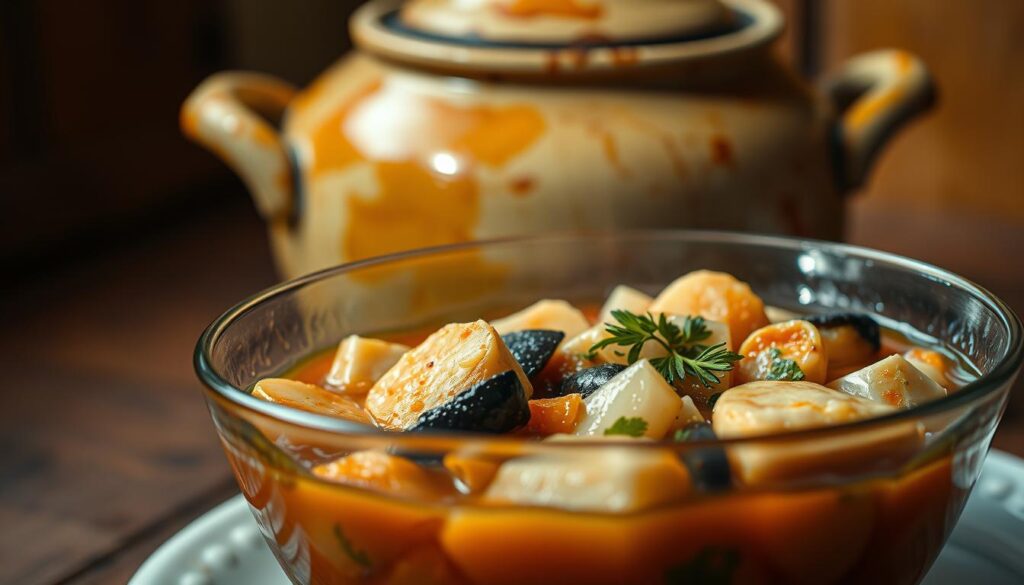 This method also retains the protein value of the fish, making it a nutritious choice.
This method also retains the protein value of the fish, making it a nutritious choice.
The convenience of potted fish is another significant advantage, as it can be served immediately or stored for later use, reducing food waste and providing a ready-to-eat meal.
The Rich History of Potted Fish
As we explore the rich history of potted fish, we uncover the diverse ways this dish has been prepared and enjoyed across different cultures. Potted fish has been a significant part of culinary traditions, particularly in coastal regions where fish was abundant.
The technique of potting fish, a traditional preservation method, has been used throughout history to make fish last longer. This method involved layering fish in a container, typically with butter or other fats, to preserve it.
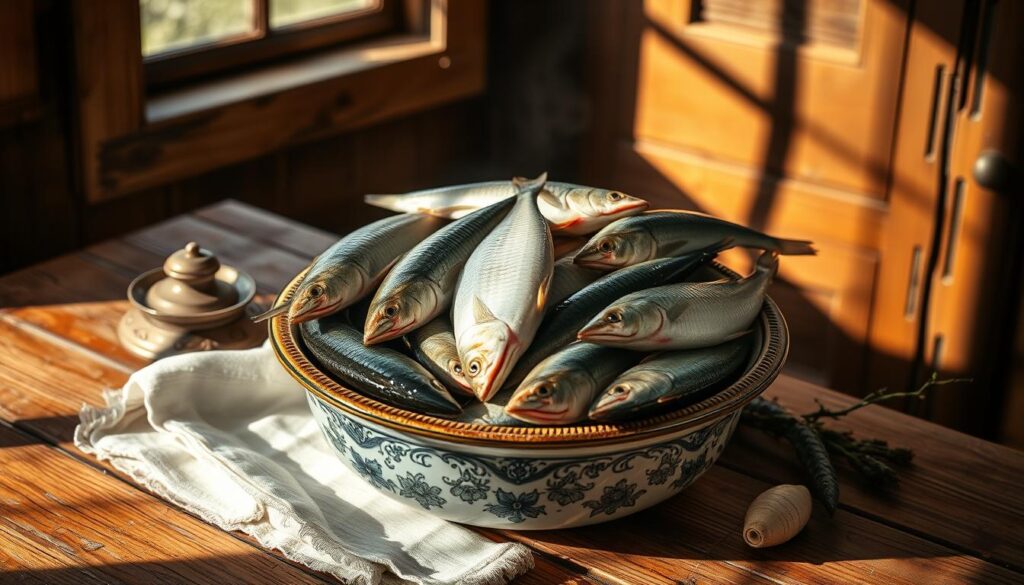
Traditional Uses Throughout History
Potting was not just a method of preservation; it was an art that varied significantly across different cultures. In Britain, for instance, potted shrimp became a delicacy, while in Scandinavian countries, preserved fish preparations were more common.
The use of potted fish was widespread, serving as a means to enjoy fish throughout the year, not just when it was freshly caught. This preservation technique allowed communities to have a steady supply of protein.
Regional Variations
Different coastal regions developed their own distinctive approaches to potted fish, reflecting local catch and flavor preferences. For example, Mediterranean cultures adapted the potting technique to their local fish varieties and flavor profiles, often incorporating regional herbs and spices.
- British potted shrimp traditions showcased the use of local seafood and the influence of European culinary techniques.
- Scandinavian preserved fish preparations highlighted the use of salt and fat in preservation.
- Mediterranean adaptations of potted fish incorporated local flavors, such as olive oil and herbs.
- The influence of available spices and seasonings on regional potted fish variations was significant, with different regions using their unique spice blends.
- American coastal communities developed their own potted fish traditions, adapting European techniques to local ingredients and tastes.
How to Make Classic Potted Fish
The art of making potted fish involves a straightforward process that yields a richly flavored result. This traditional dish requires a few simple ingredients and some careful preparation to achieve the perfect balance of flavors and textures.
Ingredients You’ll Need
To start, you’ll need fresh fish, typically a fatty fish like salmon or mackerel, along with clarified butter, salt, and any desired herbs or spices. The quality of your ingredients will directly impact the final product, so choose the freshest fish available.
Step-by-Step Preparation
Begin by preparing your fish: clean, season, and cook it according to your preference. Then, fill a pot or jar with the cooked fish, leaving a small space at the top. Next, pour clarified butter over the fish, ensuring that it covers the surface completely to prevent air from reaching the fish.

Clarifying Butter: The Essential Technique
To clarify butter, gently heat it in a pot over medium/low heat. Let it bubble gently until the milk solids separate from the butterfat and sink to the bottom. Then, strain the mixture through a sieve lined with clean muslin cloth to remove the solids, resulting in pure clarified butter.
This process not only purifies the butter but also enhances its preservative qualities, making it ideal for potting fish. By understanding how to clarify butter, you’ll be able to create a better seal and achieve longer preservation.
Enjoying Your Potted Fish Creation
With our potted fish creation ready, let’s explore the best ways to enjoy it. To maximize flavor, we recommend bringing it to room temperature before serving. This delicacy pairs perfectly with a hunk of sourdough bread and a green salad, making for a lovely lunch or light dinner.
Potted fish can also be used as a ‘stir-in’ sauce for pasta, adding a rich, fish flavor. For an added twist, serve it with pickles on the side and a sprinkle of pepper. To maintain its quality, store it in the refrigerator and refresh the butter seal as needed.
